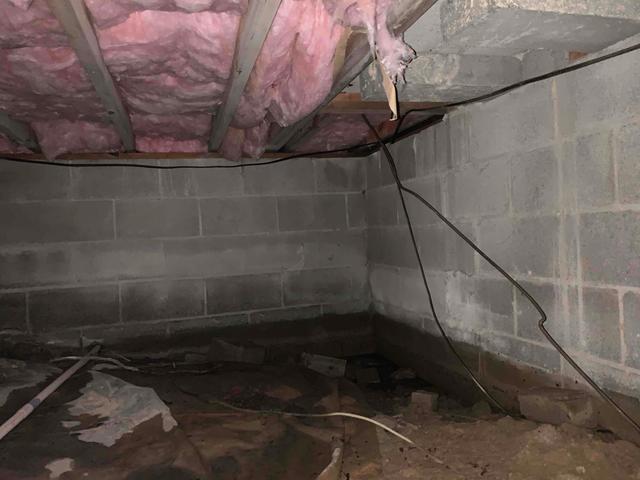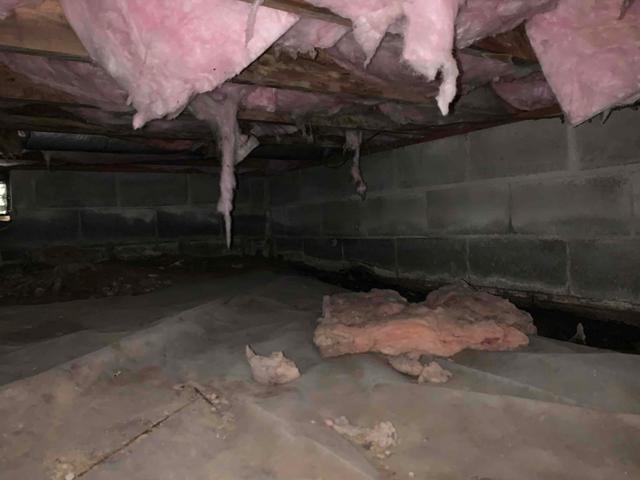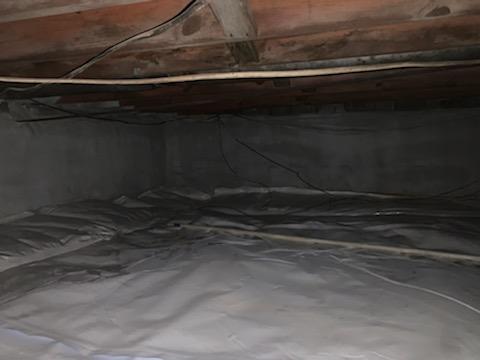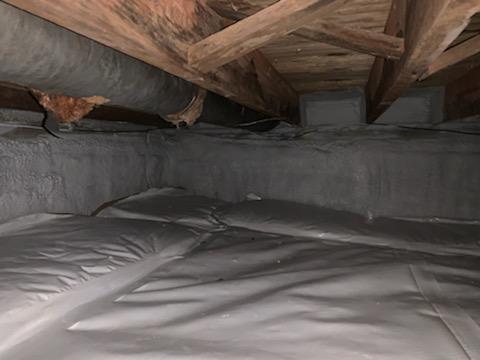
Mold and Mildew Growth
Mold and mildew have grown on many of the wooden floor joists of this crawl space. This can occur on any organic material as long as the relative humidity reaches over 60% during warmer temperatures. The mold spores and musty odors can rise into the home above and irritate those with allergies and asthma.

Gaps in the Vapor Barrier
There are gaps and tears in the existing liner of this crawl space. This is allowing the earth's moisture to rise into the crawl space and raise the relative humidity, which can lead to condensation, moisture damage to materials, and mold and mildew growth. The muddy ground and debris littering the floor make it difficult for servicepersons to navigate around the crawl space.

Porous Foundation Walls and Open Vents
The foundation walls of this crawl space are made with porous cinderblocks, allowing the outside moisture to seep through them and raise the relative humidity. Open vents lining these walls are also allowing the outside air and moisture to freely enter the crawl space and affect the relative humidity and environment.

Mold Remediation
An antimicrobial, called Shockwave, was applied to any affected floor joists. This solution will eliminate mold growth, but it does not remove any staining left behind from the growth. It is important to note that mold and mildew can regrow if the environment and relative humidity of the crawl space are not controlled.

CleanSpace Vapor Barrier
A 20-mil CleanSpace vapor barrier was installed over the dirt flooring of this crawl space. This durable liner is wrapped around all piers, sealed with vinyl tape, and mechanically fastened to the foundation walls six to eight inches above the outside grade. The CleanSpace will help to protect the crawl space environment from any moisture rising from the earth, while giving a clean, bright aesthetic to the crawl space.

Closed-Cell Spray Foam
The open vents lining the foundation walls were internally blocked off with custom foam board pieces and can foam. Then, the foundation walls are covered using an R-10 value of closed-cell spray foam. At two inches thick, this spray foam acts as an air barrier and vapor retarder, protecting the crawl space from any outside influence. A two-inch viewing strip is left at the top of the walls for termite inspectors.


